Juhu Aerodrome:-History
Gandhi on Juhu Beach 1937
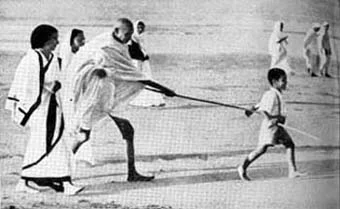
The airport served as the city's sole airport till Santacruz airport, now Chatrapati Shivaji International Airport. It served as the city's airport up to and even during the 1939-45 war. Two bitumen runways were in operation and a third was planned for construction in 1939 but this never occurred.
The Imperial Airways 'Hanno' Hadley Page passenger airplane carries the England to India air mail, stopping in Sharjah to refuel.
ENGLAND TO INDIA IN 6 DAYS BY PLANE!-FASTEST TRAVEL POSSIBLE 1940'S

Armstrong Whitworth AW-154 Argosy II ...
Armstrong Whitworth Atalanta | Revolvy
In 1929, Aga Khan offered through the Royal Aero Club, a special prize of £ 500 for “a solo flight
completed within six weeks from the date of starting”. The prize was to remain open for one year from
January 1930. There were three contestants – an eager JRD Tata, Man Mohan Singh, a civil engineer
graduating from Bristol who had learnt to fly in England, and ASPY Merwan Engineer, later the Chief of
the IAF. The three men set out flying single-engine, light aeroplanes with simple instruments and without radio. Man Mohan Singh took off from Croydon airport, south of London, in a Gypsy Moth
| Gypsy Moth |
which he
called Miss India; ASPY Engineer followed the same route while JRD Tata, also in a Gypsy Moth, started
his journey in the reverse direction. After Croydon, Man Mohan Singh flew on to Lympne, Le Bourget
(Paris), Dijon, Marseillers, Rome, Naples, Catania, Tripoli and Sirle. From Gaza, he flew eastwards to
India, with Engineer trailing a day behind. Singh finally landed at Drigh Road, Karachi on 12 May 1930,
But one thing is significant - in all the years of operation and the millions of miles these aircraft flew not a single passenger died. There was a death in the fire in Karachi - but not a passenger.
The 1930s might seem to be a
potentially dangerous time to have been an air passenger. Certainly
there were more accidents for every 1,000 passengers than there are
today. But a single Boeing 747 accident can kill 3 times as many
people as the total of fatalities in the 1930s. The 200,000 people
who flew on commercial services in 1936 evidently didn't believe they
were putting themselves in mortal danger.
HP-42 at Cairo
They were one of the first aeroplanes
in which the flying crew (pilot and assistant) were in an enclosed
cabin. They were also unpressurised meaning they could not fly at
more than a few thousand feet as the passengers would feel the
absence of oxygen, but flying low means increased turbulence so they
could be bouncy flights.
Their operation was not accident free,
the Airport Society database shows 34 incidents involving the
Imperial Airways aircraft all over the world - from Croydon to Cairo,
Kampala to Karachi. These incidents were of varying levels of
seriousness, from a wing-tip collision between two HP 42E while
taxying in Khartoum, to a forced landing in the desert near Qatar
leading to the complete loss of the aircraft and another that was
burnt out in a fire in a hangar in Karachi. Imperial Airways aircraft cabin, 1930sA publicity postcard that doesn't mention the aircraft type - maybe an Armstrong Whitworth Argosy which in the interwar period constituted the fleet that maintained Imperial Airways' lunchtime service to Paris and is believed to have been the world's first named airline service.  |
| Karachi Airport (1930) |
was eventually declared the winner, which Singh accepted.
On October 15th, 1932 JRD Tata took off from Karachi to Ahmedabad and on to Bombay in a solo flight carrying postage mail. He landed at the Juhu airstrip and India's civil aviation took off. In 1946, Tata Airlines became Air India and in 1953, the company was nationalized by the Government of India.
----------------------------------------------------------------------------------------------------------------------------
The Armstrong Whitworth A.W.154 Argosy stemmed from a declaration by Imperial Airways that all its aircraft would be multi-engine designs, on the grounds of safety. They were intended to replace the older single-engine de Havilland aircraft that Imperial Airways had inherited from its constituent companies, mainly Daimler Airway.
The passenger cabin of an Imperial Airways Argosy, which could accommodate 18 passengers. Posing at the rear is the steward who served them a buffet lunch as part of the airline's "Silver Wing" service:
Argosies continued in service with Imperial Airways until 1935, with the last example G-AACJ City of Manchester being used for joy-riding by United Airways Ltd of Stanley Park Aerodrome (Blackpool), that was later merged into British Airways Ltd. It continued in use with British Airways until December 1936.
Web results

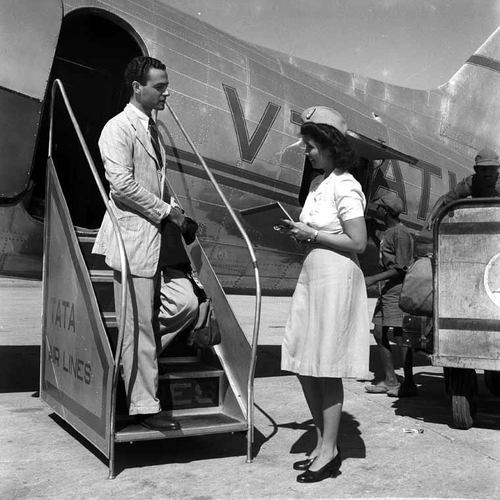
Undated picture of an air hostess welcoming a passenger alighting from a Tata Airlines airplane.
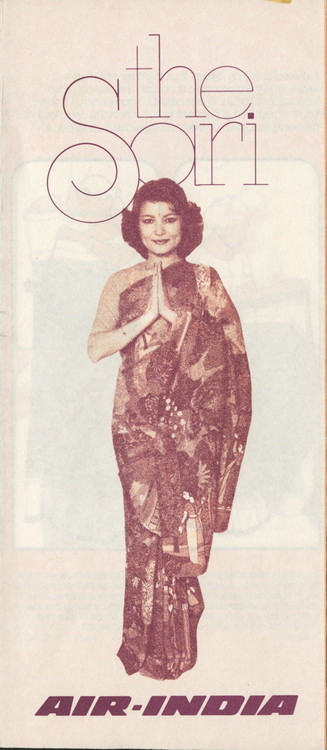
The Sari becomes the official dress code for Air India
Picture Gallery - Air-India Collector
A call for Air India's Past Laurels ... - Airliners-India :: View topic

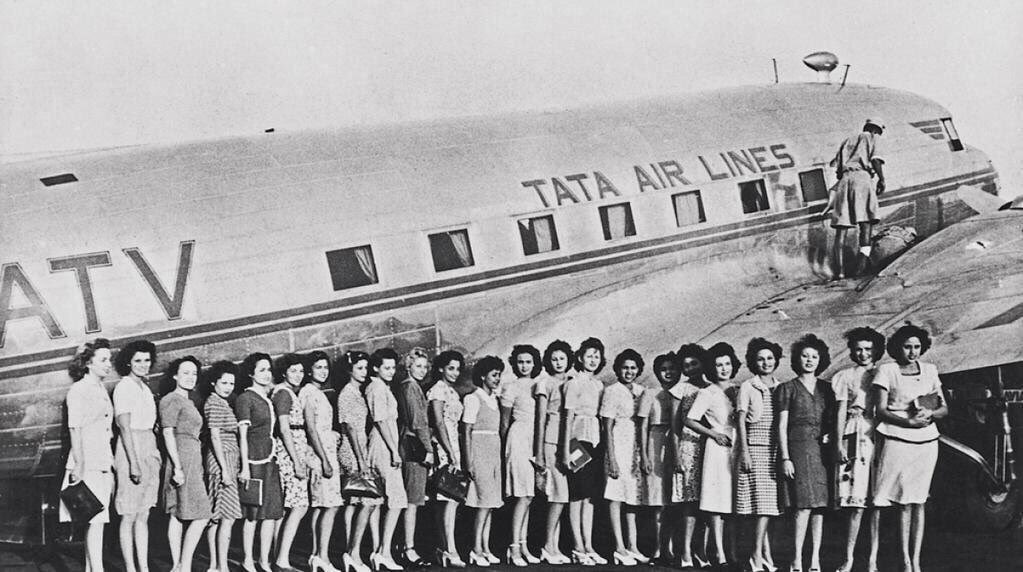 1023 × 572
1023 × 572In 1990, JRD’s vision was finally fulfilled when Air India, in association with Indian Airlines and the Indian Air Force, created a world record by evacuating 1,11,000 people from Amman (in Jordan) to Mumbai in 59 days just before the Gulf War broke out in the Middle East. This was the “the largest evacuation effort by a single civilian airline.”
This was probably JRD’s greatest contribution to modern civil aviation in India. As he put it, “No success in material terms is worthwhile, unless it serves the needs or interests of the country and its people.”
A year after he was awarded India’s highest civilian honour, the Bharat Ratna, JRD Tata passed away in Geneva on November 23, 1993, at the age of 89. On his death, the parliament of India was adjourned as a tribute to JRD – a rare honour usually not given to people who are not members of the parliament.
Where was the first airport in India ...quora.coTata Airmails. 1932-1946. - Aero-philately
The beginnin
one palm-thatched shed, one whole time pilot assisted by Tata and Vintcent, one part-time engineer and two apprentice-mechanics. Initial service included weekly airmail service with a Puss Moth aircraft between Karachi and Madras via Ahmedabad andBombay, covering over 1,300 miles. In its very first year of operation, Tata Airlines flew 160,000 miles, carrying 155 passengers and 10.71 ton of mail. In the next few years, Tata Airlines continued to rely for its revenue on the mail contract with the Government of India for carriage of surcharged mail, including a considerable quantity of overseas mail brought to Karachi by Imperial Airways. The same year,
Havilland Leopard Moth - Wikipedia
| miles merlin plane for Bombay Trivandrum flight 1933 |
1935 - Bombay - Travancore via Goa & Cannanore - Indian ...
| 1940 CURTIS PLANE |
| K.L.M (Royal Dutch Air Lines) Douglas DC-2 (PH-AKK Koetling) |
Bombay Flying Club on New Years Day 1931-JUHU AIRPORT
| Bristol Bombay - K 3583 The first production Bristol Bombay - K 3583 - flew in March 1939 and was to be the basis for the post War Bristol Type 170 Freighter, Wayfarer and Superfreighter Following the success during the Second World War of the twin engined Bristol Type 130 Bombay utility aircraft in the Middle East theatre of operations, the Bristol Type 170 was devised along similar lines but with a much larger fuselage and simplified single fin tail and two-spar wing construction. It was also to be more specialised as a rugged heavy duty freighter with low initial and running costs and easy maintainance without the use of any special tools. Indeed, initial projections were for just one man hour of maintenance per aircraft hour of flight. The production Type 130 Bombay had been introduced in 1939 as one of the first large twin engined monoplane designs to serve with the Royal Air Force. Built to meet Air Ministry specification C.26/31 for an aircraft capable of carrying 24 fully armed troops, 10 stretcher cases as an air ambulance or equivalent mixed freight, the high seven-spar cantilever winged fixed-undercarriage Bombay used lessons learned from Bristol's unique twin engined Bagshot fighter ( J7765 ) of 1927. The oval sectioned monocoque steel strip and aluminium fueslage frame of the Bombay was covered by a stressed Alclad skin. Alclad - an American invention - consisted of the lightweight but potentially corrosion prone Duralumin coated with a thin film of pure aluminium. For civil aircraft specification 22/44 Bristol designer Archibald E. Russell had retained the wide tracked fixed undercarriage of the Bombay but gave the wing - with the same section and taper ratio - a swept leading and straight trailing edge. |
| super constellation plane |

Malabar Princess
first flight:-
On June 8, 1948, Air India's newly acquired aircraft, 'Malabar Princess', made a historic 8000 kilometre journey from Mumbai to London.
The 24-hour ride was made on a 40-seater Lockheed L-749 Constellation commanded by Captain K.R. Guzdar.
This aircraft was not capable of flying continuously over a long distance, thus the flight had to make technical halts at Cairo and Geneva for refuelling.
The aircraft carried 35 passengers which included Maharaja Duleep Singh, the Jam Saheb of Nawanagar, the Rajpramukh of Saurashtra, JRD Tata, H.B. Malcolm and R.R. Noble

JRD Tata

Mr & Mrs J.R.D. Tata meeting Mr V.K. Krishna Menon, then High Commissioner for India, on the arrival of Malabar Princess.
photos of planes at juhu airport 1940-1950| DC-4 |
Five-seat cabin monoplane-Miles Aircraft Limited-1935
was opened from Bombay to Karachi, Aden and Nairobi.
| 49C Super Constellation |
Pan American World Airways Boeing 377 Stratocruiser (N1033V) "Cipper Seven Seas" arriving at London Heathrow on September 12, 1954 during Pan Am's heyday.
Photo by RuthAS
749A
|
for two new routes will be exempted. Bombay, Madras and Bombay-Calcutta-Singapore-Bangkok-Hong Kong was on 16 14th July respectively August opened. The latter route was to the extradition of three L-1049E
| L-1049E |
7th May be extended from 1955 to Tokyo. Finally, we included two months later, the airport of Beirut and Zurich in the London route.
| L-1049G |
Pan Am Boeing 377 Stratocruiser Promo Film - 1950
One of the neatest vintage airliner promos around. Fantastic footage of PAA Strats, plus s
take over on 5 October for the opening of the weekly service, Bombay-Madras-Singapore-Darwin-Sydney used. As the first non-Soviet bloc owned airline also received All traffic rights for Moscow. The Soviet capital was allowed - in the pool with the Tu-104 Aeroflot
| Tu-104 Aeroflot |
- from 14 August, Delhi and Tashkent are served. Their first jet aircraft could AII in February 1960 to introduce the first place.
BEFORE.
SANTACRUZ AIRPORT WAS BUILT IN 1948
Nationalisation
The early '50s saw the financial condition of various airlines operating in India deteriorate to such an extent that the Government decided to step in and nationalise the air transport industry and accordingly two autonomous Corporations were created on August 1, 1953.
Indian Airlines was formed with the merger of eight domestic airlines to operate domestic services, while Air India International was established to operate the overseas services.
- On 15 July 1953, a BOAC
- DH.106 Comet
- landed at Juhu Aerodrome instead of Mumbai's much largerSanta Cruz International Airport. The aircraft was flown out some nine days later.
- On 28 May 1968, the pilot of a Garuda Indonesia Convair 990
- also mistook Juhu Aerodrome for Santacruz Airport and tried to land his aircraft. It overshot the runway falling just short of the traffic road ahead and several residential buildings when its nose wheel got stuck in a ditch at the end of the runway. All passengers survived.
- On 24 December 1972, Japan Airlines Flight 472, operated by Douglas DC-8-53
| Convair 990 |
en.wikipedia.org |
| Douglas DC-8-53 |
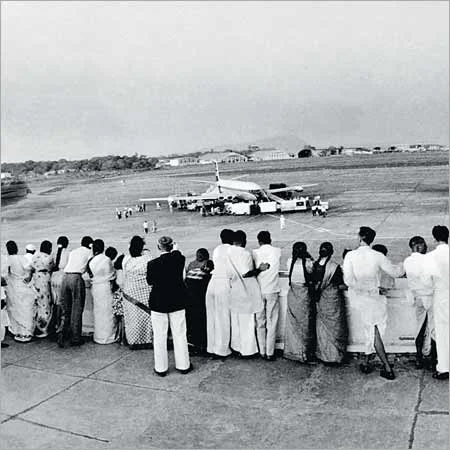
NOW






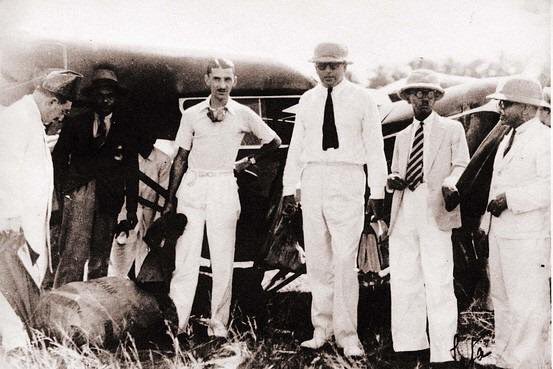










No comments:
Post a Comment